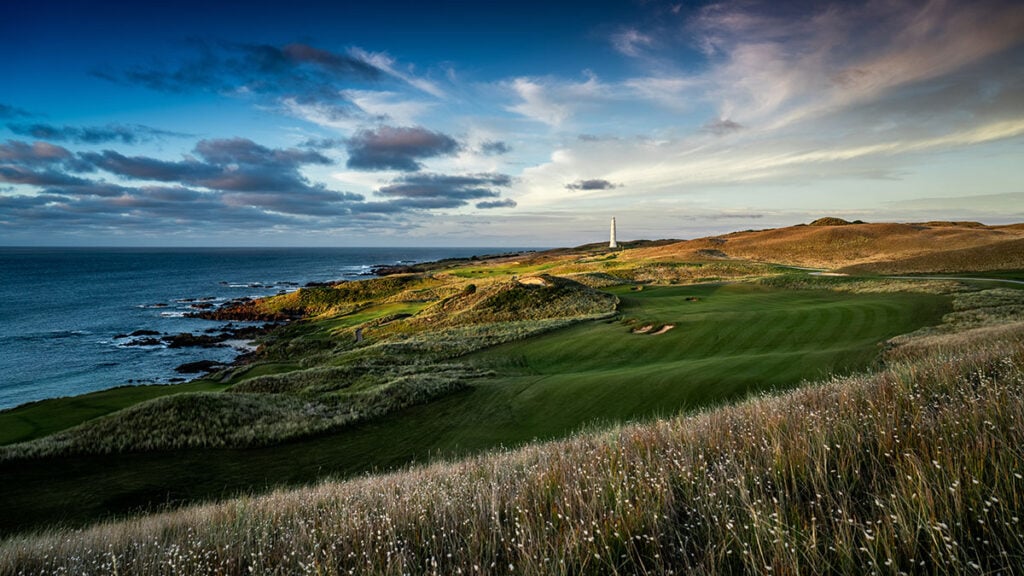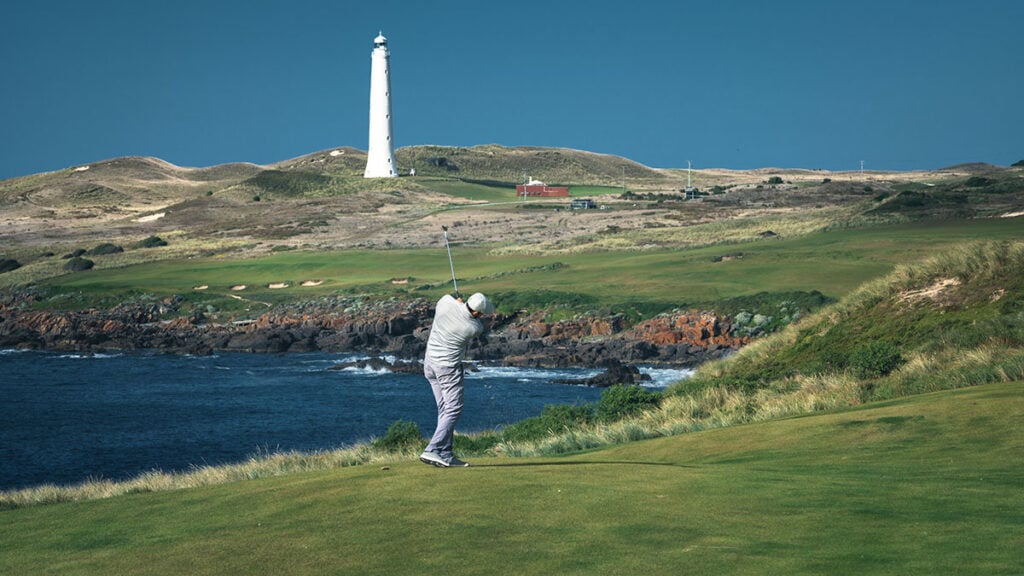A few years ago the Apple Isle was in danger of being pigeonholed as “Barnbougle or bust”. Not anymore.
The time-honoured, rather unflattering jibe certain mainlanders make towards Tasmanians usually infers in some fashion to inhabitants of our nation’s smallest state having two heads. Most simply laugh it off, while others shoot back with: “Two heads are better than one!” It’s banal humour and usually good-natured rather than cutting, but is about as long-standing as interstate jokes in this country get.
Well, I’m here to tell you the joke’s on you. It’s something that took me 42 years to discover: Tasmanians are the smartest Australians of all. In contrast to the silly English, who discovered paradise on the other side of the globe more than two centuries ago and decided to send their convicts there, Tasmanians have been quietly sitting on the best piece of Australia all these years and not made a fuss about it. Only one in 50 of us call Tasmania home – and I am now proud to be one of them, albeit on a part-time basis. Since semi-relocating south at the beginning of the year, I have taken time to explore the golf offerings of the Apple Isle and discovered a more lively golf scene than the state gets credit for.
Of course, in the past few years Tassie has become the hotbed of golf in this country with four courses ranked in the top 10 in the land, none of which existed at the turn of the millennium. No other state has seen such frenetic growth in its top-tier golf in that time. But the quartet of top-10ers isn’t the only reason to play golf here, nor is the place as chilly as you probably think.
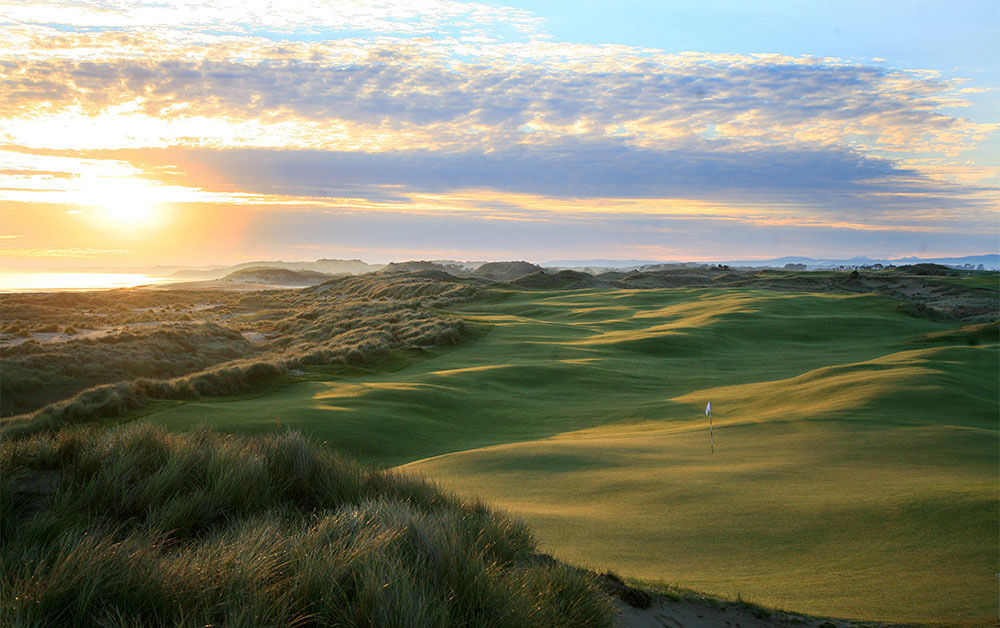
Yes, most questions that mainland golfers ask centre on the weather, especially the cold. Now as a ‘veteran’ of one Tasmanian winter, I can say it’s not that bad. I’ve felt far colder in places like Ballarat, Orange and Armidale, while even western Sydney’s overnight temperatures are comparable. In and around Launceston in Tasmania’s north, a healthy percentage of winter days are sunny and clear once any of the city’s notorious fog lifts (the best ‘pea-souper’ I remember this past winter didn’t lift until 1:30 in the afternoon). And while I am far from a meteorologist, I swear most of the rainfall descends at night. In Hobart, the winter days don’t tend to be as warm but nor are the nights quite so cold. You quickly learn that a clear, 14 or 15-degree day is comfortable under a couple of layers, one of which is likely to be peeled off after a few holes. The distinctness of the four seasons is endearing and golf remains perfectly playable all year. I teed off just after 8am on the winter solstice and struck a shot or two in the first few holes where not only was the frost still clinging to the fairway, it had encircled my golf ball, giving me an icy, Saturn-like ring to strike through.
Better In Pairs
This month marks 15 years since the first of the two Barnbougle courses opened, the Tom Doak/Mike Clayton collaboration at Barnbougle Dunes. We’ve praised owner Richard Sattler in these pages before for having faith in the people who were telling him how perfect his land outside Bridport on the north-east coast would be for golf. Still, it takes someone to take the plunge, and Sattler dove in, letting design and construction teams infiltrate his pristine land and create something equally immaculate but more universally useable. Six years later Barnbougle Dunes had a sister, the Bill Coore-designed Lost Farm, as instantly golfers had reason to stay for a weekend rather than visit for a day. And people do, again and again. You can’t stand in front of the fireplace inside the Dunes clubhouse and not notice the wall of glinting trophies there, with the same groups returning year after year to compete for them. Rumour has it there’s more golf to come – Sattler certainly has the land for it – but the next likely expansion will be less lavish, perhaps in the form of nine more holes and a Himalayas-style putting course. Either or both occurring will strengthen what is already a must-visit destination.
The next likely expansion at Barnbougle will be less lavish, perhaps in the form of nine more holes and a Himalayas-style putting course.
This decade the action has taken place on King Island, a windswept chunk of rock parked in Bass Strait off the north-western tip of Tasmania (but still considered part of the island state). Simultaneously, the Mike DeVries/Darius Oliver-imagined Cape Wickham layout and the Graeme Grant-designed Ocean Dunes morphed into reality, with the former edging the latter to opening by a few months during 2015 and 2016. They make a powerful double act – at least the equal of the Barnbougle duo, perhaps better – and are well worth the trip to the island.
Cape Wickham, a 40-minute drive north of the main King Island town of Currie, sits at the top of the island and feels utterly remote – but in the best kind of way. In pleasant conditions, it’s difficult to picture a more perfect setting in which to play the game, a place where golfers’ minds can be rejuvenated and challenged at the same time. The holes themselves are the stuff of postcards, calendars and entire-wall panoramas, highlighted by the excellent use of the coastline for nine of the holes. Yet after three visits in the past four years, I’ve come away with the same observation: the quality of the nine non-coastal holes is in no way a letdown. And that might just be the course’s greatest achievement.
Ocean Dunes, with its couch and bent surfaces compared to the wall-to-wall fescue grass of Cape Wickham, offers compelling points of difference in a complementary setting. Grant’s design touches the coast for six of the 18 holes but likewise loses little when the path deviates inland. Case in point is the menacing 14th hole, a downhill teaser of a par 3 of just 126 metres with a two-level green. The ocean isn’t in play, but from a high tee it is impossible to escape its presence or its impact on the shot at hand. Likewise a hole earlier, the 13th is screened from the sea by a tall dune with the fairway scaling that same dune towards a horizon green. So you don’t see the ocean, but you’ll need to judge its impact on approach because the wind whipping off it will have an effect.
The natural inclination, like at Barnbougle, is to crown a ‘winner’, yet such an exercise is usually futile given the chameleon-like changeability of the place. (OK, so Australian Golf Digest’s Top 100 Courses ranking gives Cape Wickham the upper hand, with a national ranking of No.3 versus No.10.). Besides, no golfer worth their salt is going to play one and not the other. So a more worthwhile exercise is to cherry-pick favourite holes and individual shots from the two, as they are more likely to linger in memory. Still, if it’s appraisals and comparisons you seek, the land movement at Cape Wickham is subtler on and around most greens, whereas Ocean Dunes’ greensites are generally more voluptuous and ask for a little more imagination. Wickham provides a few more opportunities for heroic carries and daring lines, not that such moments are in any way absent at Ocean Dunes. It sits just on the northern outskirts of Currie and is as close to the airport as it is the town, giving Ocean Dunes the edge for convenience.
The weather is volatile in the middle of Bass Strait, so short-range bookings can make sense – check the forecast first then pounce on a good day. The recurring figure I’ve heard bandied about since the two courses opened is: golf is playable on King Island 300 days per year. And seeing as both Cape Wickham and Ocean Dunes now close for most of each winter, that stretch takes care of much of the remaining 65.
Still, it pays to be prepared for all and any weather, as even on a seemingly clear day golfers are susceptible to a fast-moving downpour. John Geary, the manager and original course superintendent at Cape Wickham, refers to the notorious squalls that pepper King Island as “scuds”, due to the suddenness, intensity and quick departure of these short, sharp drenchings.
The logistics of getting to King Island do need to be weighed up. If you are from anywhere in Australia other than Melbourne or the rest of Tasmania, you will need two legs to get there. And unfortunately most of the commercial flights arrive and depart in the middle of the day, which can complicate plans of playing golf on the day you get there and the day you leave. If you are chartering a flight, you will likely need a precise number of golfers – often eight – to make it financially viable. Then there’s the luggage to consider on a small aircraft (‘pencil’-style golf bags are great space-savers). Yet other options are available. Tackling ‘the Bass Strait Triangle’ is an increasingly popular way of playing golf across the top of Tasmania. The three points of the triangle include the Barnbougle duo, the King Island pair and Melbourne as the starting and finishing point. If you can make it work in terms of timing, number of starters, financially and logistically, there might not be a better sequence of four rounds in Australian golf.
Bigger And Better
Devonport is the town that welcomes visitors to Tasmania arriving by the car-transporting Spirit of Tasmania vessel, which docks there after its frequent passages across Bass Strait. Devonport is also a little more than an hour by car from Launceston. And there is a pair of golf courses well worth touring before any Tassie sojourn meanders on.

Devonport Country Club is a new entity soon to boast a flash new clubhouse and sports centre when an $11 million structure opens this month. A merger between the former Devonport Golf Club plus the Devonport Bowls & Croquet Club and Spreyton Bowls Club created a new sporting hub for the area, with much of the funding came from a federal grant and state coffers. The state-of-the-art sports centre includes an international-standard indoor bowls area, four grass greens and two croquet courts adjacent to the golf course. The centre also has a club bar, sports bar and multi-purpose section that can host small events or be extended to cater to functions of up to 400 people. For golfers, Graeme Grant is restoring their Vern Morcom-designed course, with his first contribution – the redesigned par-3 10th hole using the Mersey River as a backdrop – opening for play in November. Grant will continue returning the Devonport layout closer to its Morcom origins, with particular focus on the style and positioning of the bunkers.
A short drive down the road is Ulverstone Golf Club, which – like Devonport – was formerly a mainstay on Australian Golf Digest’s biennial Top 100 Courses ranking. Many in the state still regard Ulverstone as the best layout in Tasmania, which is an extraordinary compliment to make in the Barnbougle/King Island era. Yet visit the place and you can see where such sentiment comes from. The course is tucked away in a secluded location alongside the Leven River with enormous eucalypts towering over the 18 holes. Drive past it and you’ve missed out.
Town and Country
Launceston Golf Club is the pick of the four suburban courses in Australia’s 20th largest city. With a history dating back to 1899, it is Tasmania’s oldest 18-hole layout and one of the oldest golf clubs in the country. I’ve played a handful of competition rounds at Launceston and, like at many clubs, the standard side game within a group of four is a best-ball match. It might be something about the golf course, but every one of those matches has gone the distance to finish on 18, which long-time members tell me is not unusual. The layout finishes with four genuine birdie chances, which might have something to do with it: a short par 5 at the 15th then three par 4s of between 278 and 323 metres.
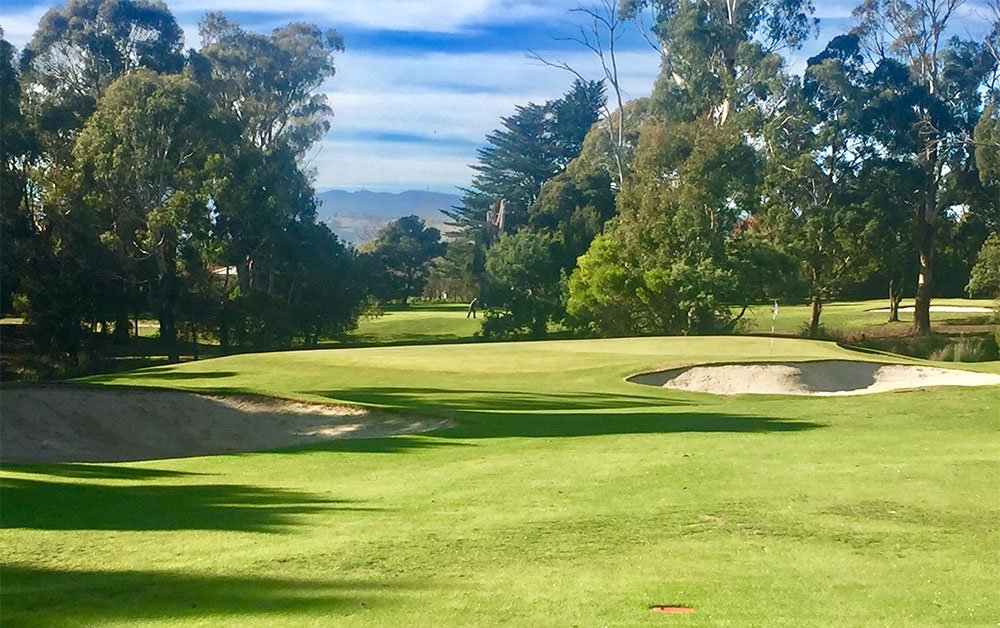
The course overall is sneaky good. Blessed with mild undulations and a healthy but non-suffocating array of trees, the layout is short yet is more difficult than the scorecard alludes to. The greens are smallish and finding your ball above the cup on several putting surfaces can be a scary proposition. The course also owns a reputation in town for resisting damp weather the best and remaining playable whenever the Tasmanian winter turns wet.
The toughest hole at Launceston is the 526-metre, par-5 second, which turns right after the tee shot before funnelling gently downhill through a narrow treelined passage that makes three precise shots imperative. Later, the 12th is arguably the best hole on the course. The tee shot on the 312-metre par 4 is fired through a chute of trees towards a fairway angled to the right with three fairway bunkers waiting to swallow anything lingering too far left. The green is perched next to a pond plus two more bunkers and is domed so that anything hovering near the edge is bound to trickle away from the target. It’s a newer green complex than the rest but is also the best of the lot. On 12, take a moment to reflect upon – if you can find it – the plaque that commemorates the extraordinary feat of member Stephen Ayres, who executed what the club dubbed its “Shot of the Century”. His drive found the grassy gully only a hundred metres or so in front of the tee. Woefully out of position and with no view of the green some 180 metres away, Ayres somehow conjured a remarkable shot and holed out for the most unlikely of eagles.
For residents in town looking to join a club or for those also pondering a ‘sea change’ to the area, Launceston Golf Club is offering several new membership categories, including a three-month trial membership for $310.
The course that challenges most strongly for ‘best in Launceston’ is the Country Club Tasmania layout. The Peter Thomson/Mike Wolveridge design stays close to the resort, casino and entertainment complex for 11 holes before crossing a road for a wide-open stretch of holes before returning for the 18th. Speaking of the closing hole, a more snaking, deadly par 5 you are unlikely to encounter. This hole has more twists, turns and horrors than a Stephen King novel. It bends right at first then left, kinking and curving all the way to the tucked green. Threading your way along the slender, winding, 512-metre journey is best done with smaller, calculated swings rather than lusty blows. Earlier, another par 5 at the fourth is a show-stealer. The quest from the tee is to either bust a big drive right over the lake that forms the corner of the 90-degree dogleg right in order to reach the green in two, or to play cautiously to the corner, avoiding the lake and fairway bunkers, to instead lay the platform for an uncomplicated, three-shot strategy.
Country Club Tasmania’s 18th hole has more twists, turns and horrors than a Stephen King novel.
Armed and Ready
With all the action in the north of the state in recent years, it’s about time Hobart and surrounds saw some activity. And it is. In May, the exciting new Arm End golf course met the last of its required approvals, with construction to begin in 2020 ahead of a forecast opening in early 2022 [see below].
Royal Hobart Golf Club – the only course in Tasmania to ever host the Australian Open – is undergoing a redesign of its greens and bunkering at the hands of course architect Richard Chamberlain. Among other projects, the club is also adding a 21st-century practice facility. Nearby, Tasmania Golf Club remains the pick of the courses in our most southern capital city. With a golf course that wraps around the shores of Barilla Bay, it is home to one of golf’s most tantalising par 5s in the 530-metre third hole, which doglegs sharply left around the bay and dares you to bite off a chunk from the tee.
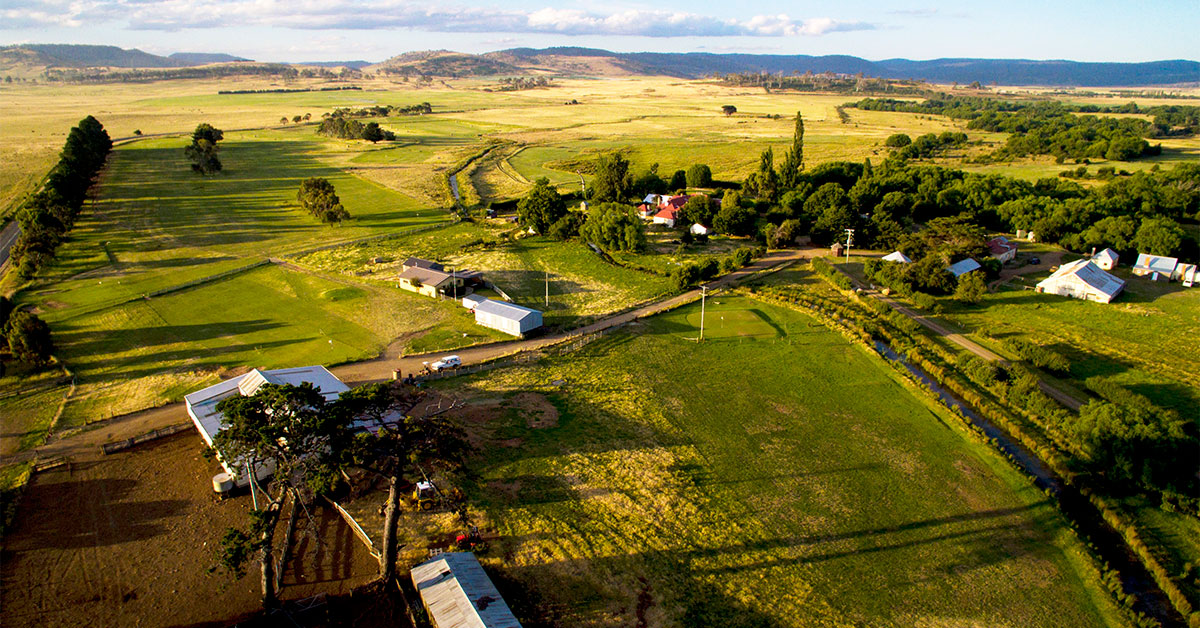
But if it’s the true soul of Tasmanian – and indeed, Australian – golf you’re after, no visit to our island state is complete without a round at Ratho Farm in the central town of Bothwell. Australia’s oldest course, dating back to 1822, Ratho Golf Links is something of a time capsule for the sport in our nation.
The most striking attribute is the sheep grazing on the course to keep the playing surfaces short, although fences do keep them off the square greens. If such an arena sounds a little too rustic for your taste, you might need to contemplate for a moment why Ratho is that way. On its website, the managers admit: “At first glance, this appears to be little more than a backwards blend of farming and recreation outside a small country town. And so it is, but so golf began.”
No bookings are required and golfers enjoy this piece of Australian golf history for a mere $40. You may (and should) play the course with hickory clubs, opening and closing the various farm gates between holes as your mind harks back to the 1800s when golf was first played there. Six ‘lost’ holes were lovingly restored a few years ago based on maps, photographs and scorecards. For those seeking an overnight stay, Ratho’s character accommodation consists of several old farm buildings – a bakery, cookhouse, granary loft, stables and more – lovingly restored into boutique rooms equipped with modern features while retaining elements of the original masonry and carpentry.
There’s also tremendous trout fishing to be had in the various streams and neighbouring River Clyde, plus the Australasian Golf Museum is located in Bothwell, making a visit to Tasmania’s centre Australian golf’s quintessential double act.
The Next Big Thing
The curves and contours of Hobart are shapely and artistic, as if God treated the Tasmanian capital as some sort of 3D canvas. Sticking into the River Derwent like a giant outstretched index finger is the South Arm peninsula, which extends north to the site of Tasmania’s next great golf location: Arm End. The 116-hectare site will offer captivating views and golf to match, with the proposed routing of the Neil Crafter/Paul Mogford-designed course taking in the most appealing points on the peninsula.
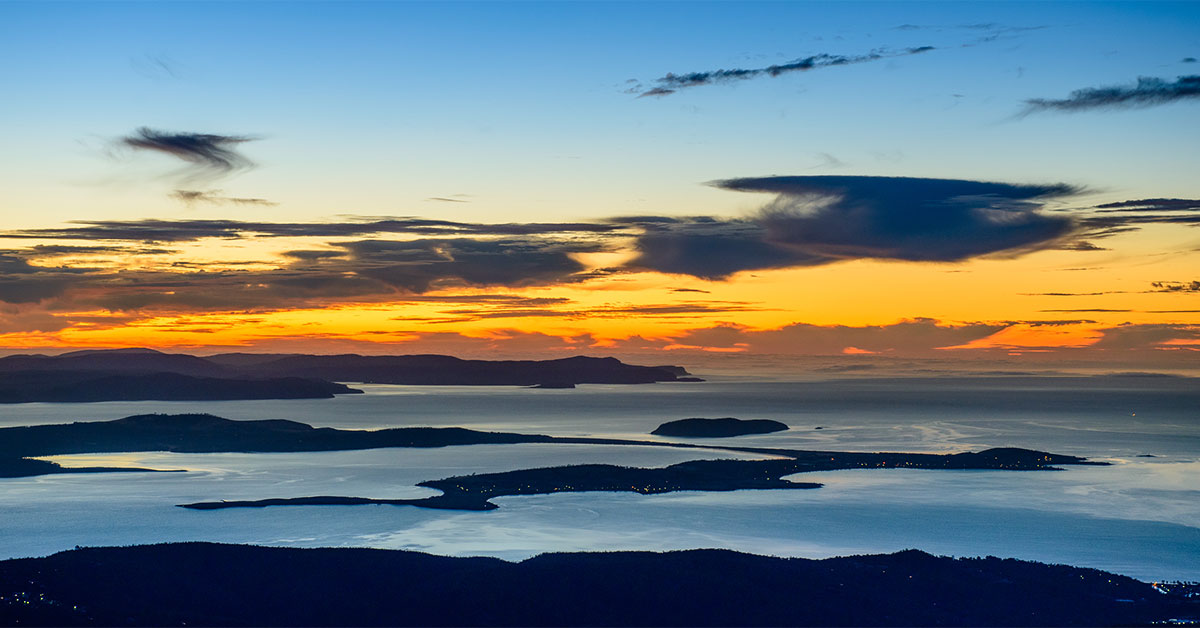
Mooted for as long as most Tasmanians can remember, in May the project ticked its final approval box with the securing of a recycled water supply pipeline. The pipe will connect Class B recycled water from TasWater’s Blackmans Bay treatment plant across the Derwent to irrigate South Arm properties and the Arm End site. Construction begins soon ahead of an expected completion in February 2022.
Not that golfers will get the place all to themselves. Arm End will remain a public-access reserve and part of the broader project includes walking and cycling paths – naturally at a safe distance from the fairways – to allow non-golfers the chance to enjoy the place in a different capacity. Located close to the Hobart CBD as the crow flies, Arm End is a solid 45-minute drive around the Derwent’s snaking edges. As such, golfers will be able to arrive via a ferry service from Salamanca.

